The history of cosmonautics and rocket building in Russia may be considered to have begun at the start of the twentieth century. The founder of these disciplines was the great Russian scientist K.E. Tsiolkovsky; major theoretical contributions were made by F.A. Tsander and Yu. V. Kondratyuk. Even in the prewar years, experimental work was being conducted to develop rocket technology for a number of purposes. In 1921, the Gas Dynamics Laboratory (GDL) was founded in Moscow, and in the early 1930s, the Group for the Study of Reaction Propulsion (GIRD) was formed. In 1933, the Reaction Scientific Research Institute (RNII) was created from the GDL, and Moscow GIRD, and in the late 1930s, Design Bureau (KB-7) was founded. All of this resulted in the development of the world’s best volley fire (Katyusha) and aircraft missile systems. At the same time, experimental, jet aircraft and liquid-fueled guided missiles were being designed and developed. The production facilities and supporting fundamental and applied science for these areas developed rapidly, serving as the basis for the start of the powerful space and rocket industry in the 1950s.
S.P. Korolev, the director of Special Design Bureau No. 1 (OKB-1) is considered to be the founder of practical cosmonautics and rocket building. He was the Chief Designer of the first Russian rockets, including the first intercontinental ballistic missile, R-7, which was the base rocket for the development of the earliest space launch vehicles (LV). The country’s success in developing rocket technology, in discoveries of the space era and the conquest of space are also associated with the names of the following outstanding designers: V.P. Glushko, N.A. Pilyugin, M.S. Ryazanskiy, V.N. Chelomey, V.I. Kuznetsov, V.P. Barmin, M.K. Yangel, V.F. Utkin, G.N. Babakin, V.S. Budnik, A.M. Isayev, S.A. Kosberg, V.P. Makeyev, M.F. Reshetnev, V.P. Mishin, V.N. Solovyev, A.D. Nadiradze, and V.M. Kovtunenko; the scientists: M.V. Keldysh and B.N. Petrov; the military specialists: V.I. Voznyyk, A.G. Karas, A.I. Sokolov, and A.G. Mrykin; directors and managers: K.N. Rudnev, D.F. Ustinov, S.A. Afanasyev, L.V. Smirnov, G.A. Tyulina, Yu.A. Mozzhorin and many others.
In addition to OKB-1 (which is currently Korolev Rocket and Space Corporation Energia (Korolev, Moscow region) such well-known enterprises as Khrunichev State Research and Production Space Center (Moscow), Progress State Research and Production Rocket Space Center (Samara), Makeyev Design Bureau (State Rocket Center) (Miass), Polyot Production Association (Omsk), Research and Production Association for Machine Building (Reutov), Lavochkin Research and Production Association, Yangel State Design Bureau Yuzhnoe (Dnepropetrovsk, Ukraine) and many others were engaged in activity related to rocket and space technology.
At present time, the development of space rocket building in Russia is associated with directors and chiefdesigners such as Yu.N. Koptev, Yu.P. Semenov, D.I. Kozlov, A.A. Medvedev, S.D. Kulikov, G.A. Yefremov, Yu.S. Solomonov, V.G. Degtyar and others.
The current Russian system of launch vehicles evolved during the process of formulating and addressing a whole set of tasks in the interests of various users, employing the experience accrued through design and use of previously developed military rockets and space complexes. The available capacities of existing launch vehicles, in general, satisfies the requirements of the spacecraft that are in current use and planned for the near future for injection into circular and elliptical orbits of various altitudes and inclinations and interplanetary flight trajectories. Spacecraft are generally launched from the Baikonur and Plesetsk cosmodromes, whose infrastructures were developed based on progressive evolution of space activity. A few light launch vehicles are launched from the Svobodnyy cosmodrome and Kapustin Yar range. Current space rocket systems have a high level of reliability and cost efficiency.
The current launch vehicles includes the expendable launch vehicles Ko-smos-3M, Tsiklon-2,3, Molniya-M, Soyuz-U, Zenit-2, Proton-K and a number of launch vehicles developed as part of the military rocket conversion program. The launch vehicles used can be divided into light, middle, and heavy classes depending on the payloads launched.
The light class includes the Kosmos-3M, Tsiklon-2, 3 and also the converted Dnepr, Rokot, Strela, Start, Start-1, and Shtil launch vehicles (Fig. 1); the mass of payloads inserted by these rockets into low orbits is 0.3-3.7 tons. All launch vehicles, aside from the solid-fuel rockets of the Start type, use AT (nitrogen tetroxide), AK-27I (nitric acid + 27% N2O4 + iodine) + UDMH (unsymmetrical dimethyl hydrazine) propellants.
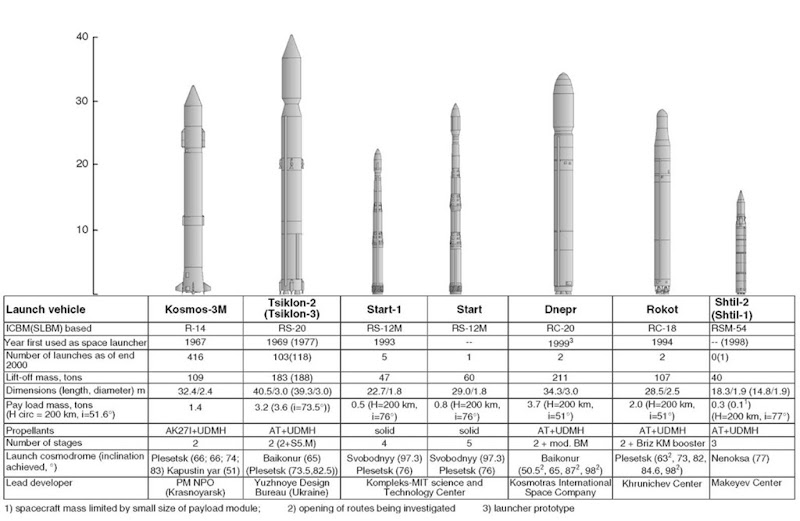
Figure 1. Light-class launch vehicles.
The prototype launch vehicle Kosmos-3M (RN 65S3) was developed by the Yuzhnoye Design Bureau (Dnepropetrovsk, Ukraine) on the basis of the intermediate ballistic missile R-14 (SS-5). Kosmos-3M is the result of a number of updates of the prototype vehicle and has been used since 1967. Since 1970, it has been serially produced by the Polyot Production Association (Omsk).
The two-stage Kosmos-3M launch vehicle can inject spacecraft into orbits up to 1700 km high by twice firing the second-stage liquid fuel sustainer engine and using a low thrust system. This launch vehicle was used to launch light spacecraft as part of Federal programs, and starting in the late 1990s, was also used to launch commercial spacecraft. At present, Kosmos-3M is no longer produced.
The two- and three-stage Tsiklon-2 and Tsiklon-3 launch vehicles were developed by the Yuzhnoye Design Bureau in 1969 and 1977, respectively. Both modifications were based on the R-36 (SS-9) military missile. The first two stages of these vehicles are virtually standardized. As its third stage, Tsiklon-3 uses the S5.M unit and repeatedly fires the sustainer engine, making it possible to expand the range of injection orbits. Production of the main components of the Tsiklon was handled by the Yuzhmashzavod Production Association (Dnepropetrovsk, Ukraine). At the present time the production of these rockets has been discontinued.
The Tsiklon System is highly automated and does not personnel at the launch facility between the time the rocket is delivered to it and the moment of launch.
In the early 1990s, development work started on launch vehicles as part of the program to convert intercontinental ballistic missiles and submarine-launched ballistic missiles that were to be eliminated in accordance with the arms reduction treaty. Solid-fuel launch vehicles of the Start class were developed strategic by the Kompleks-MIT Science and Technology Center based on the RS-12M (SS-25) intercontinental ballistic missile. These vehicles are intended for launching small spacecraft with various uses into low near-Earth orbit. The first launch of the four-stage Start-1 vehicle occurred at the Plesetsk Cosmodrome in March 1992. Further launches of this vehicle as part of Federal and commercial programs took place at the Svobodnyy Cosmodrome. Development of a five-stage version of Start is currently underway.
The Dnepr launch vehicle was developed by the Kosmostras International Space Company and was based on the most powerful intercontinental ballistic missile in the world, RS-20 (SS-18). This liquid-propellant, two-stage ICBM was developed in 1973 by the Yuzhnoye Design Bureau and produced serially at the Yuzhmashzavod Production Association. There were two successful launches of the Dnepr prototype carrying foreign commercial spacecraft in April 1999 and September 2000. These launches occurred at the Baikonur cosmodrome from the silo launch facility. All of the main components of this launch vehicle are standard and available without modification. There are proposals to equip the launch vehicle with a more powerful third stage (Dnepr-M).
The Rokot launch vehicle, which is distinguished by its third stage, was based on the RS-18 (SS-19) ICBM. For its third stage, Rokot (chief developer Khrunichev Center) uses the Briz-KM upper stage and multiple firings of the sustainer engine, making possible various injection patterns. The first launch of Rokot took place in December 1994 from the ICBM RS-18 silo at Baikonur and injected a spacecraft into orbit. In May 2000, Rokot was launched from Plesetsk carrying two mock-ups of the Iridium spacecraft. The launch complex for Rokot launches was built at this cosmodrome by rebuilding the existing facility for launching Kosmos-3M and the technical complex for preparing Rokot and its spacecraft Tsiklon-3 technical facility.
As part of the program for converting submarine-launched missiles, the Makeyev Design Bureau Center undertook to adapt certain rockets for use as launch vehicles. In July 1998, two Tubsat spacecraft were launched into low near-Earth orbit using the Shtil-1 launch vehicle (a conversion of the RSM-54 submarine-launched missile) from an underwater position in the region of the Barents Sea. The standard three-stage, submarine-launched ballistic missile was adapted for spacecraft launch: a special frame to hold the spacecraft was installed and the flight program was altered. In addition, a special container with telemetry instrumentation that allowed ground control to monitor the injection was mounted on the third stage. The State Rocket Center has made a proposal to update Shtil. The more powerful Shtil-2 and Shtil-3 are proposed for launching small low-orbit spacecraft.
The intermediate class includes launch vehicles using an oxygen-kerosene propellant: Molniya-M, Soyuz-U, and Zenit-2 (Fig. 2). The range of payloads they can inject into low orbits is 6.8-13.7 tons. Molniya and Soyuz launch vehicles were developed by the team at OKB-1 under the direction of S.P. Korolev based on R-7 ICBMs. Note that R-7 ICBMs (R-7A, S-6) are the base rocket for development of a whole series of modified space launch vehicles, in particular,
• the Sputnik launch vehicle, which, in October 1957 launched the first artificial Earth satellite into Earth orbit. The payload capacity of this two-stage launch vehicle in low orbit was approximately 2.0 tons.
* the Vostok launch vehicle, which was the Sputnik vehicle equipped with a third stage (block “E”) that enabled launches of flights to the Moon by the unmanned Luna-1, -2 and 3 in September-October 1959 and the April 1961 launch of the manned spacecraft Vostok with the Earth’s first cosmonaut, Yu.A. Gagarin. The payload capacity of this three-stage launch vehicle in low orbit was approximately 4.8 tons.
Starting in 1961, all of the work to develop, improve, flight-test, and operate R-7 rockets was assigned to the Progress State Research and Production Rocket Space Center (Samara). The first launch of the four-stage Molniya vehicle occurred in 1960. In 1964 and 1985, this launch vehicle underwent substantial updating to expand its capacities and maintenance safety. At present, the Molniya-M is being used. It has an “L” upper stage with a liquid propellant engine fired in weightlessness. This module contains the control system, which controls the flight of both modules L and I. The Molniya-M is designed to launch spacecraft for interplanetary flights and into highly elliptical orbits. It has been used for launches of spacecraft of the Luna, Venera, Mars, Molniya, and Prognoz type spacecraft.
The three-stage Soyuz-U is an updated version of the Soyuz launch vehicle, used from 1966-1973. It can launch various kinds of spacecraft, including manned spacecraft from the Baikonur Cosmodrome and unmanned craft from Plesetsk. Between 1982 and 1995, a modification of Soyuz-U, called Soyuz-U2, was used for the manned space programs. Unlike Soyuz-U, Soyuz-U2 used the “sintin” propellant instead of kerosene T-1 in its core module. At present, this launch vehicle is no longer manufactured.
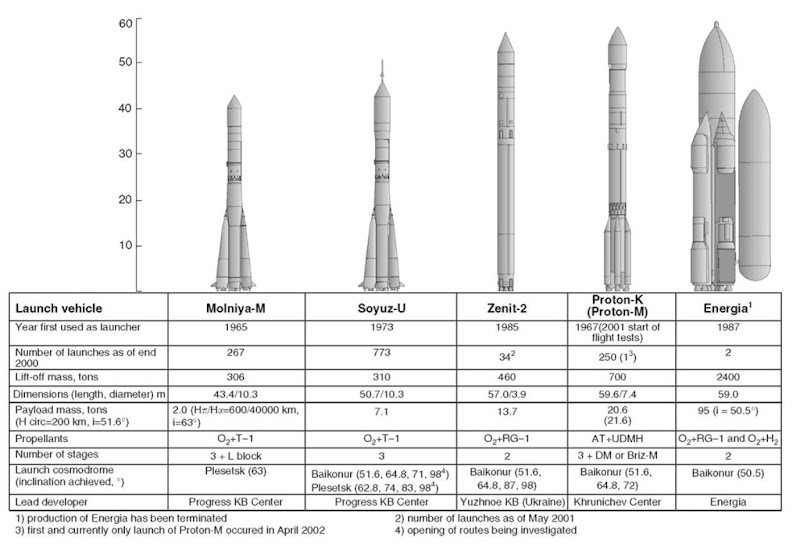
Figure 2. Intermediate- and heavy-class launch vehicles.
At present, the Progress State Research and Production Rocket Space Center (Samara), is conducting work on a phased modernization of Soyuz launch vehicles. The tasks of modernizing Soyuz involve the phased development of a standardized three-stage launch vehicle, Soyuz-2 (Fig. 3).
During the initial phase, to allow launch of Soyuz-TMA spacecraft and the cargo spacecraft Progress-MA, work is being conducted to provide a minor update of the Soyuz launch vehicle. The essence of this update is the use of updated stage I and II engines on the basic Soyuz vehicle, and minimal changes of the existing control system, the tank drainage and synchronization, and indicating speed regulation systems. This launch vehicle, designated Soyuz-FG, using a nose cone 3.0 m in diameter, can inject a payload weighing up to 7.4 tons into low Earth orbit. Flight tests of Soyuz-FG began in 2001.
The next phase, along with the use of launch vehicle engines on stages I and II, will involve
• use of a control system based on a highly efficient digital computer that has modern components and advanced software;
• use of a new digital radiotelemetry system.
The new control system will provide very precise injection into orbit and also will increase the diameter the nose fairing from 3.3 to 4.1m. The Soyuz-2 launch vehicle will have a payload capacity for injection into low Earth orbits of up to 6.9 tons.
During the last phase, the Soyuz-2 launch vehicle will be equipped with a more powerful stage III and a new liquid propellant engine developed by the Design Bureau for Chemical Automation, which will increase the payload mass for low near-Earth orbit to 8.1 tons.
To deploy Globalstar telecommunications satellites, the Starsem Company (a Russian-French joint venture), used the Soyuz-Ikar system. The Ikar upper stage was developed at the Progress Center using as a base the equipment module of the Kometa spacecraft. Since 1999, there have been six successful launches of Soyuz-Ikar.
To expand the altitude range for spacecraft orbital injection (right up to geostationary orbit), the Lavochkin Research and Production Association developed the upper stage Fregat, based on the propulsion unit of the Fobos spacecraft, for use with Soyuz launch vehicles (Soyuz-Fregat launch vehicle). At present, the certification of the system has been completed, so that it is ready for use. In 2000-2001, four successful launches of this vehicle were completed as part of the Cluster program. The Soyuz-Fregat can insert a payload with a mass of 3640 kg into highly elliptical orbits (for Hp/Ha = 236/18,000, i = 64.9°).
The Starsem Company has commissioned development of a commercial variant of this launch vehicle, under the name Soyuz-ST. The major difference between this vehicle and Soyuz-2 is a larger nose cone based on the nose fairing from the Ariane-4 launch vehicle (diameter 4.1-m) to increase the space available for the payload. This launch vehicle can be launched from the Baikonur and Kourou cosmodromes.
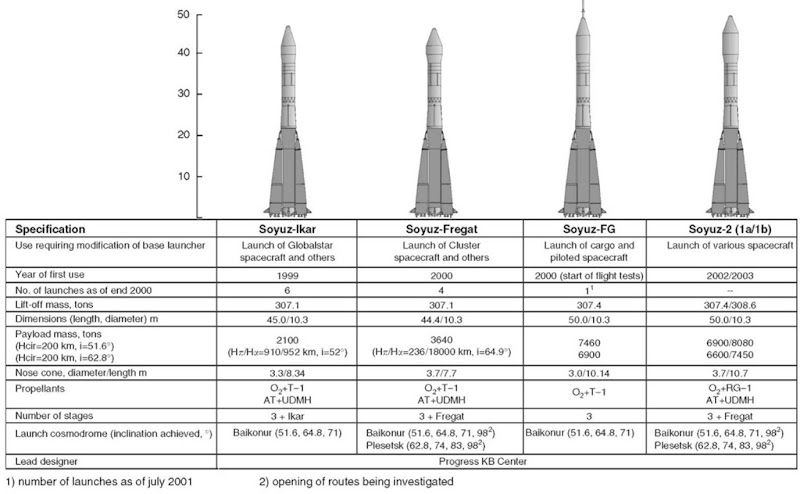
Figure 3. Specification of Soyuz type launch vehicle modifications.
The two-stage launch vehicle Zenit-2, developed by the Yuzhnoye Design Bureau and manufactured in Ukraine, is intended for injecting midclass unpi-loted spacecraft into low and intermediate altitude circular orbits (including sun-synchronous orbits). This system requires almost no manual labor for service, when it is being prepared for launch and when it is removed from the launch facility if the launch has been aborted. When launched from Baikonur, Zenit-2 injects payloads of up to 13.7 tons into low orbits.
The Zenit and the DM upper stage (developed by RSC Energia), based on advanced innovative technology, formed the basis for the international commercial Sea Launch project. When launched from the equatorial zone, Zenit-3SL with the DM-SL upper stage can inject a payload weighing 2.9 tons into geostationary orbit. In 1999, the first demonstration launch of this rocket took place from the Odyssey floating platform in the vicinity of Christmas Island. After that, Sea Launch began commercial operations. In mid-2001, there were seven launches of Zenit-3 SL; one of which was unsuccessful.
Work has started to develop the next generation of intermediate-class launch vehicles. RSC Energia, with foreign investment, is developing the Aurora midclass launch vehicle. The Aurora is planned for launches of spacecraft for Federal programs and commercial customers. For commercial launches, the Asia Pacific Space Center (APSC) has commissioned a cosmodrome on Christmas Island (Australia). According to the draft project published by RSC Energia in 2001, the launcher will deliver payloads with a mass of 12.0 tons to low circular orbit and 2.1 tons to geostationary orbit, when the launch occurs from the cosmodrome on Christmas Island, and payloads of 11.0 and 0.9 tons, respectively, for launches from Baikonur.
The heavy class of launch vehicles includes Proton-K, developed by the Khrunichev Center using AT + UDMH propellants (Fig. 2). Two versions of this launcher are used: a three-stage for delivering spacecraft into low orbits (Mir modules and International Space Station modules, and heavy spacecraft) and the four-stage version with the DM transfer stage to inject spacecraft into high-energy orbits (including geostationary transfer orbits, geostationary orbits, and interplanetary trajectories).
The Proton-K has earned a reputation as the most reliable (flight reliability = 0.97), well-tested (230 launches have been performed), and cost efficient launch vehicle of the heavy class. Progressive design changes incorporated as it was built have allowed it to keep pace with growing demands during almost three decades. At present, its payload capacity for orbits 200 km high and inclination of 51.6° is 20.6 tons, and its payload capacity in geostationary orbit has been increased to 2.6 tons.
The Khrunichev Center is modernizing the Proton-K. The development of the Proton-M launcher is being conducted to replace the outmoded analog control system by a modern system with a onboard digital computer and a flexible injection program; to reduce environmental pollution; to provide a smaller impact zone for the separated elements; and also to improve energy performance (in low orbit, up to 21.6 tons and in geostationary orbit using a DM or Briz-M upper stage up to 3.0 tons). In April 2001, the first launch of Proton-M took place, starting its flight-test phase. In the future, plans call for using an oxygen-hydrogen upper stage, which will enable an increase in payload mass to geostationary orbit to 4.0 tons.
In the 1970s, Special Design Bureau-1 (in 1966, renamed the Central Design Bureau for Experimental Machine Building) developed the superheavy N-1 launch vehicle for the manned Lunar program. The launch mass of the rocket was approximately 2800 tons, and the length of the rocket with payload was approximately 100 m. Propellants were supercooled oxygen and kerosene. The N-1 launcher was supposed to inject a payload of 95 tons into a parking orbit of 220 km. The first test launch of the rocket occurred in 1969. There was a total of four launches. Unfortunately, all launches failed and in 1974, it was decided to discontinue work. Note that these N-1 developments were subsequently used to develop the Energia launcher. The Energia, which was flight-tested in the late 1980s, used oxygen and kerosene and oxygen and hydrogen as propellants and had a payload capacity for low orbit of 95.0 tons, belongs to the superheavy class (Fig. 2). After two launches (both were successful) in May 1987 and October 1988 as part of the program to create the reusable Energia-Buran space shuttle system, the production of Energia was terminated.
In the near future, the development of the Russian system of launch vehicles (Fig. 4) stipulates the use ofSoyuz-2 and Proton-M launchers to implement Federal and commercial programs. The Zenit launcher may also be used to perform particular launches in the Federal program.
Creation of the new generation of launch vehicles is linked, first and foremost, with development of the Angara launch vehicle family (lead development at the Khrunichev Center). The main goal of the project is to develop the Angara-A5 heavy-class launcher. This launcher is being developed to provide Russia with guaranteed access to space from the Plesetsk cosmodrome (including launches into geostationary orbit) for implementing the Russian National Space Policy and future advancement of Russian launch vehicles in the global market. A modular technique for building this family of launchers of different classes has been proposed (Fig. 4). As the core module, designers are considering the new universal rocket module (URM-1), a development with an oxygen-kerosene engine, developed by NPO Energomash. This module will serve as the basis for constructing launchers of various classes, starting with light-class launchers Angara-1.1 and Angara 1.2, which will use one URM as the first stage and different second stages. Successful development of URM as a component of relatively inexpensive light-class launchers, and also the possibility of obtaining additional funds from potential commercial clients for their launches, shall become the basis for developing more powerful launchers in the Angara family. The heavy class Angara-A5 will have a cluster of five URMs and the midclass Angara A3 will use a cluster of three URMs. Launches of Angara family launchers are planned for the Plesetsk cosmodrome with maximal use of the existing launch and technical facilities at that site.
To expand the spectrum of orbits with regard to altitude and inclination, upper stage modules are used for Russian intermediate- and heavy-class launch vehicles. Figs. 5 and 6 show the designations and characteristics of current and modernized (future), upper stage modules for intermediate- and heavy-class
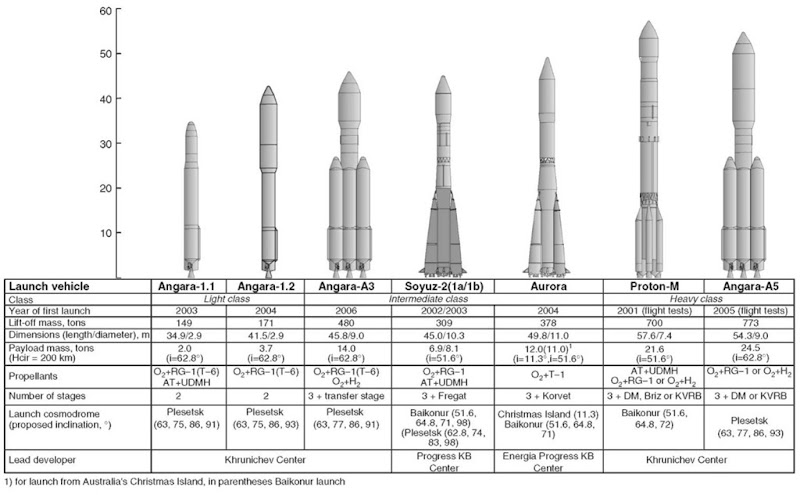
Figure 4. Future launch vehicles.
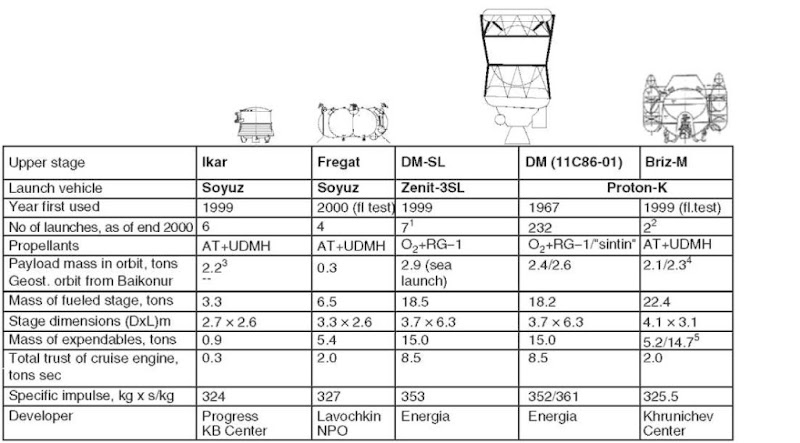
Figure 5. Upper stages used for intermediate- and heavy-class launch vehicles.
1) number of launches as of May 2001
2) number of launches counting the first launch of Proton-M in April 2001
3) on launch into mid-near Earth orbit (Hn/Ha=906/948km,i=52°)
4) numerator-direct injection into geostationary orbit, denominator- 10 hour mode (with intermediate orbital phasing)
5) numerator-central module, denominator-auxiliary propellant tank ejected in flight launchers. Depending on the propellant used, these, modules can be divided into three groups:
• upper stage modules using storable toxic propellants (Ikar, Fregat, Briz-M);
• upper stage modules using oxygen-kerosene propellants (block DM type);
• upper stage modules using oxygen and hydrogen propellants.
Further improvement of the lift capacities of heavy- and intermediate-class launchers is associated with the development and use of transport modules with low thrust engines, particularly, electric rocket engines (ERE). The current technical level of development and cumulative flight experience in the application of ERE and solar cells has created the preconditions for developing sustainer engine systems for energy-intensive transport operations in near-Earth space. The use of low thrust engines with substantially better efficiency than traditional liquid propellant engines will require implementing new patterns of injection into high-energy orbits, including geostationary orbits. The time required for orbital injection would be increased from several hours to several months, which demands the development of a spacecraft adapted to such prolonged injection.
The main line of development of space launch systems in the twenty-first century, first and foremost, is based on the gradual shift to reusable space transportation systems, including space-rocket and air-space systems. As
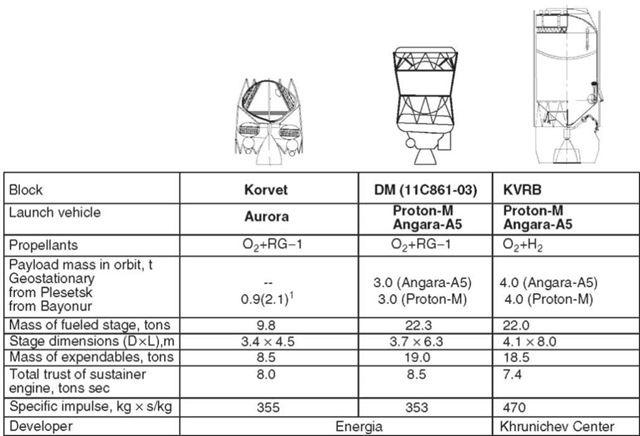
Figure 6. Modernized and future upper stages for intermediate- and heavy-class launch vehicles.
1) in parentheses are data for launch from Christmas Island cosmodrome research has shown, the shift to reusable launch vehicles of a new generation can:
1. decrease the cost of launching a unit of payload mass compared with the traditional expendable launch vehicles:
* by a factor of 1.5-2 if reusable space transport systems are built with the optimum percentage of reusable components using a level of technology that will be available in the near future;
* by a factor of 5 to 7 if a completely reusable vehicle were built using high level advanced technology.
2. increase the mission performance probability and crew safety by a factor of at least 5 compared to the level associated with current launchers.
3. virtual elimination of environmental pollution by maximum decrease, up to complete elimination, of the hazard zones along the launch trajectories, as a result of use of nontoxic propellants, and also injection of spacecraft into orbit without accompanying debris of spent launcher parts.
At present, more than 15 Russian scientific, research, and design organizations are working on a program to develop the scientific and technical requirements for a reusable transport system. Results of a comparative analysis of various vertical and horizontal launch reusable transport vehicle designs allowed to select four reusable space transportation system versions. Two of them are based on technology available in the near future:
• A system based on a two-stage reusable all-azimuth rocket with a vertical launch and multiple return (to the launch site) rocket booster in the first stage and an expendable injection module as the second stage. The payload in this design could be a spacecraft under the nose fairing, if injection is to take place according to the traditional pattern, or an orbital transport spacecraft, consisting of a reusable orbital spacecraft and an expendable cargo module, for performing transport and technical maintenance operations. At present, the Khrunichev Center in cooperation with the NPO Mo-lniya, is developing a reusable module of the first stage Baykal, which could be used in an all-azimuth rocket launch vehicle in the near future (Fig. 7). The reusable Baykal module has a landing mass of about 18.5 tons, a length of the order of 29 m, and a diameter of 2.9 m. It has the configuration of a high-wing monoplane with a rotating wing attachment above the body of the fuselage. An RD-191M liquid propellant engine is installed in the Baykal tail section. In the nose, there is an RD-33 jet engine unit for cruise flight on return to the launch area and landing at an airport. A full size technological mock up of the Baykal was displayed in June 2001 at an aerospace exhibit at Le Bourget and in August 2001 at the MAKS-2001 airshow.
• A two-stage reusable aerospace vehicle system with horizontal launch, consisting of an An-225 subsonic carrier aircraft and a reusable orbital aircraft with an expendable external propellant tank.
Two versions were selected based on more advanced future technology:
* a single stage fully reusable space rocket plane with vertical launch and horizontal landing;
* a two-stage reusable aerospace system with horizontal launch, consisting of a hypersonic aircraft booster with a combined propulsion system and a rocket orbital boost stage.
The development of a reusable space transportation system is linked to the solution of a whole series of technical problems; the key ones are
• development of reusable sustainer liquid propellant engines;
• development of reusable returnable booster rockets for the first stage;
• development of materials, designs, technologies, and components for decreasing the mass of the assemblies and systems by 30-60% and more, compared to the current level;
• development of methods for minimizing work entailed in turnaround servicing, including methods of monitoring and diagnosing the postflight status of equipment, including the large cryogenic containers;
• development of technical principles and methods for providing a qualitatively new level of safety and preservation of equipment in emergency situations.
Thus, proposals call for creating a new generation of space transportation systems by 2010-2015, which, because of the use of advanced engineering designs and technologies (reusability, advanced materials, designs, components propulsion units, control systems, ground servicing technologies, etc.) will make it possible (by a factor of 2-4) to decrease annual expenditures significantly on transportation support, expand the consumer potential of launch vehicles, improve their performance characteristics (reliability, safety, readiness for launch, and others) and make Russian transportation systems competitive on the launch vehicle world market.
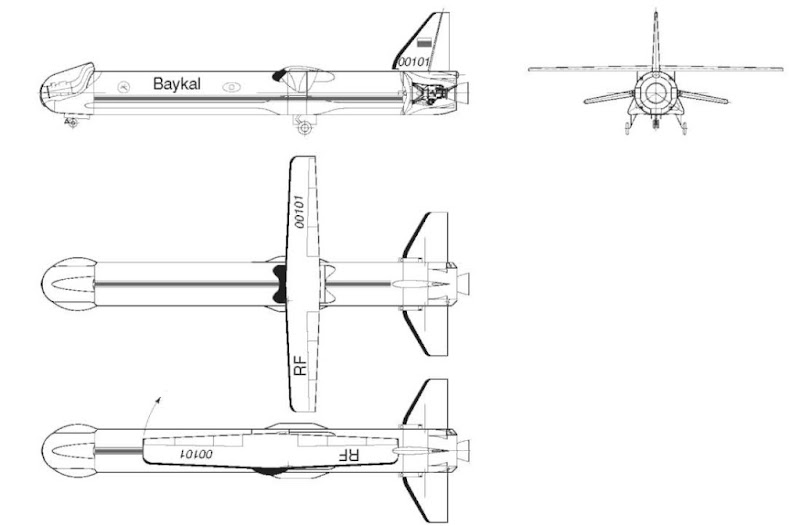
Figure 7. First stage of the reusable Baykal module.
RUSSIA'S LAUNCH VEHICLES
Next post: SATURN SYSTEM
Previous post: RUSSIAN SPACEPORTS
